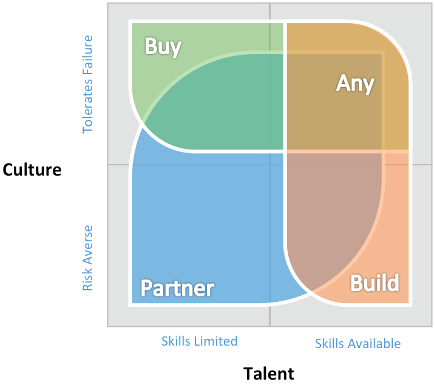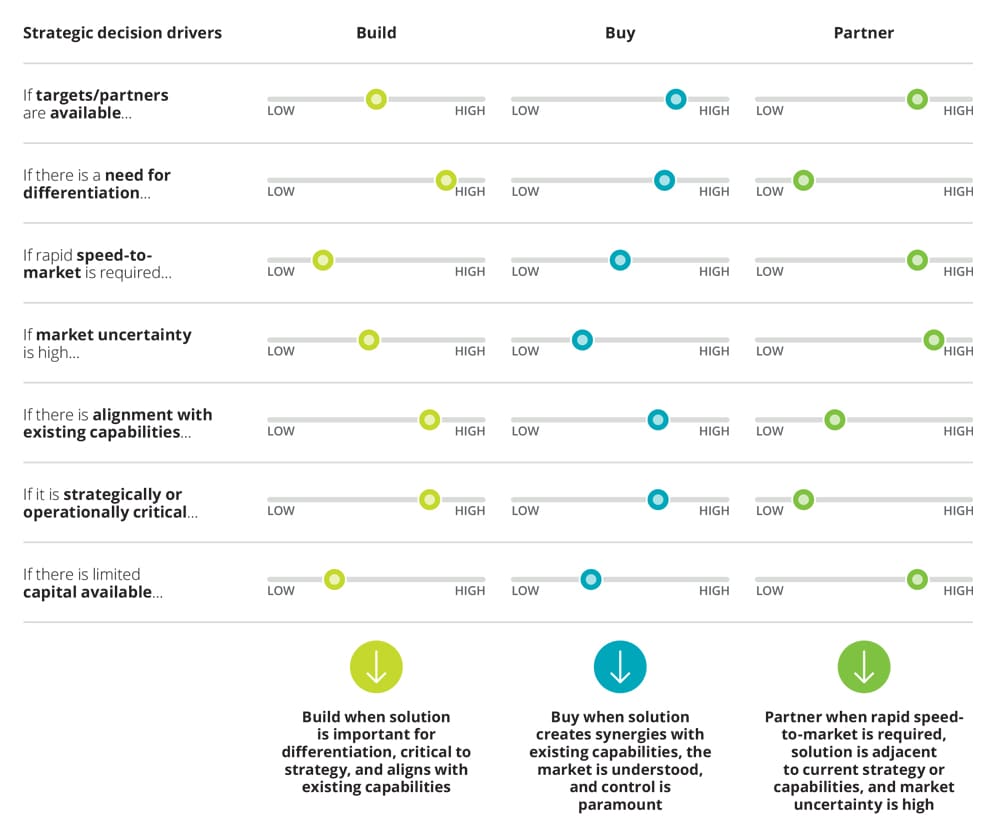Buy | Build | Partner
Strategic alliances: Powering your inorganic growth strategy
The increasing importance of accessing external capabilities
As change accelerates in the business world and technology disruption dominates, organizations need a clear strategy to create or acquire the capabilities required to keep pace and seize new opportunities. Learn how alliances can play a key role in helping organizations understand and overcome current challenges.

New prominence for strategic alliances
The transportation industry is being transformed as clean transportation decarbonization and computer-based automation fundamentally changes how business is done. In this fourth Industrial Revolution, the digital technologies disrupting the business environment range from electric vehicle car charging stations to big data analytics to artificial intelligence (AI) to the internet of things (IoT). The result is a shift in which physical and digital technologies are merging to create ever more interconnection. This fundamentally alters the way organizations understand information, make decisions, develop products, and serve their customers and markets.
Amid demands for a faster pace of technology innovation and faced with the increasing complexity of the marketplace, organizations are being forced to reevaluate and broaden their strategies for developing or accessing new capabilities. In-house research and development (R&D) is a powerful tool, but its disadvantages include long cycle times and high costs. Partnerships can help provide faster, less costly, and less risky access to assets and capabilities, particularly in areas that fall outside an organization’s core competencies.
Once an organization has defined its vision and strategy and has identified the assets and capabilities required to win in the market, it’s then faced with the question of how to obtain those assets and capabilities. The organization’s leaders need to be able to answer—with confidence—the question of whether to build, buy, or partner.
Deciding when to partner
The considerations that influence a company’s build, buy, or partner decision can be framed by examining the strategic drivers that are in play.
When industry dynamics are well understood, and an asset or capability is central to a well-defined strategy, an acquisition or internal development may serve as the optimal growth path. In other situations, particularly when there is significant market uncertainty or the proposed initiative isn’t central to the organization’s strategy, a greater number of exploratory partnerships may be the stronger alternative.
In the latter case, forming an alliance can create strategic optionality by allowing organizations to learn rapidly about a new capability or a new market space without devoting an outsized investment of time or capital. In either case, the ability for an organization to acquire or partner may be dictated by the availability of viable acquisition targets or partners.
Given the degree to which competitive dynamics and sources of advantage are changing quickly or are unclear, business leaders must be prepared to work in an unstable environment—to function well amid uncertainty.
As companies continue to develop growth strategies, there will be a need to balance internal factors—including organizational aspirations and capabilities—against external factors such as competition and regulation. The increasing pace of innovation, ballooning valuations, and regulatory uncertainty help to position alliances as valuable alternatives to M&A.
The build-buy-partner framework

